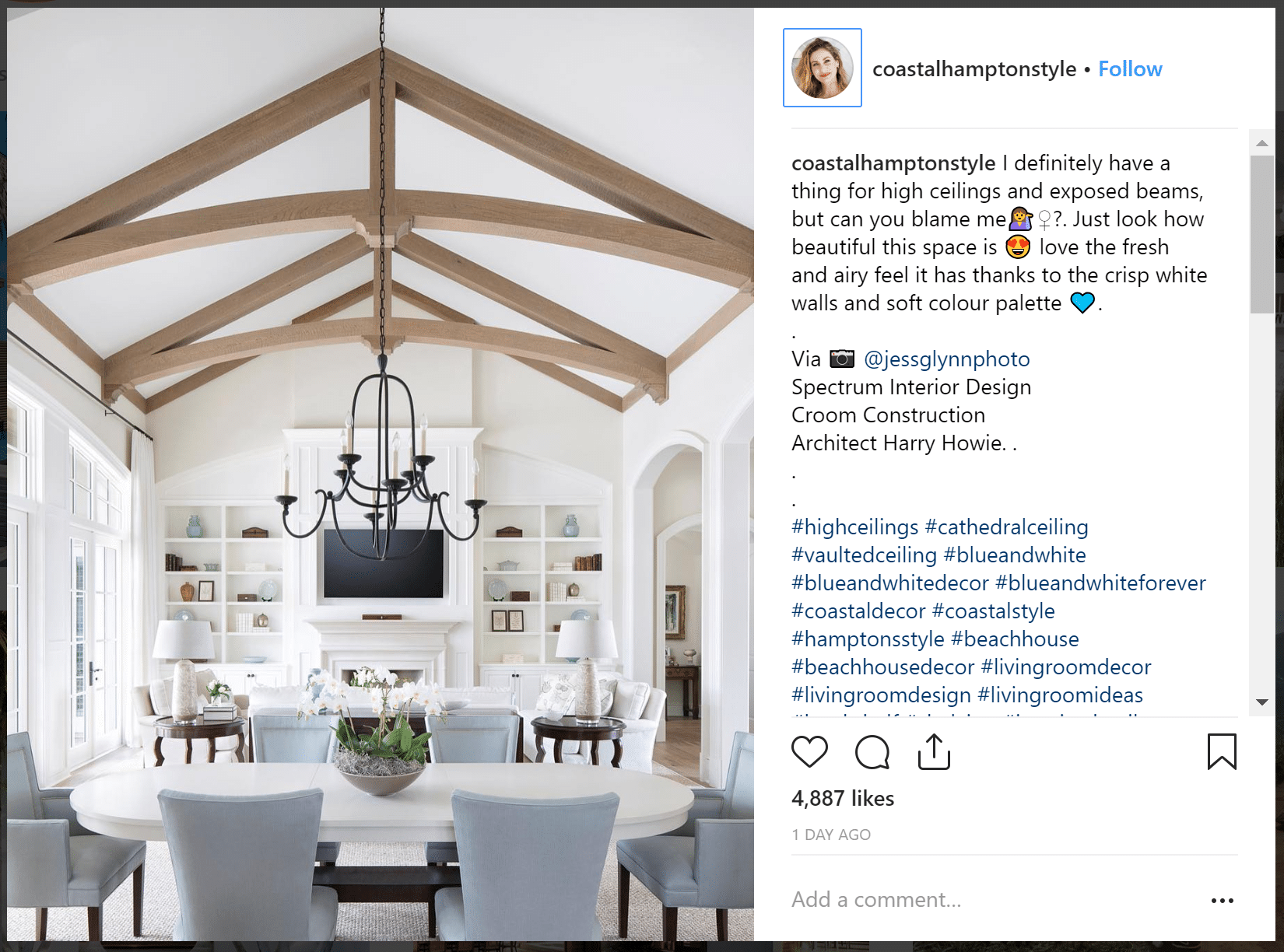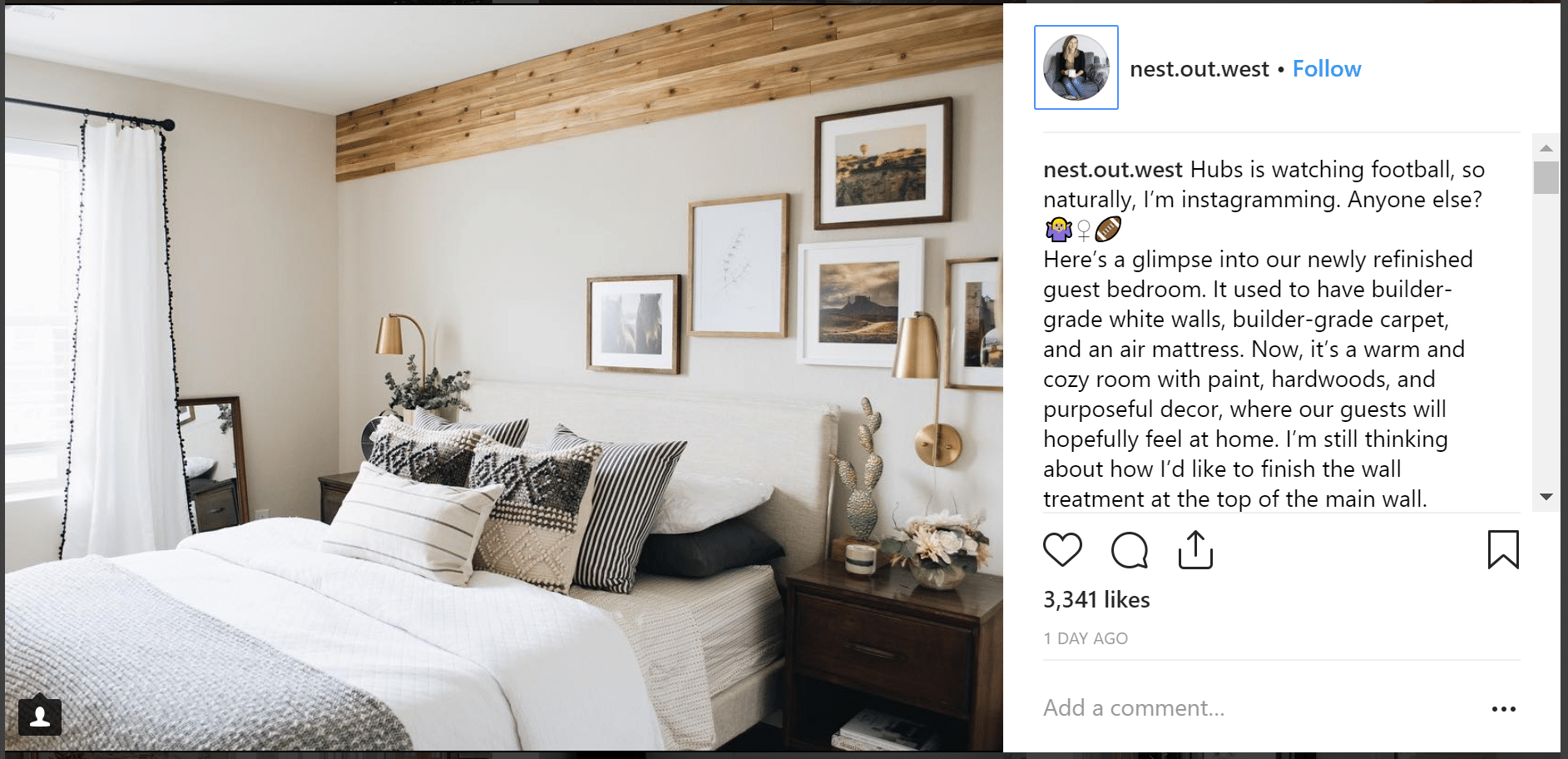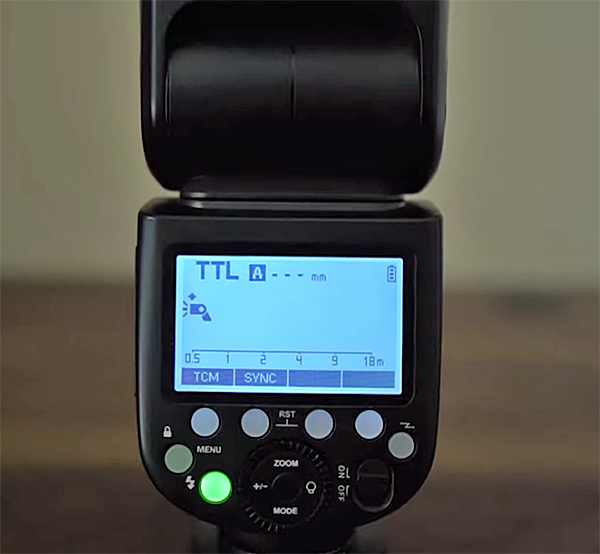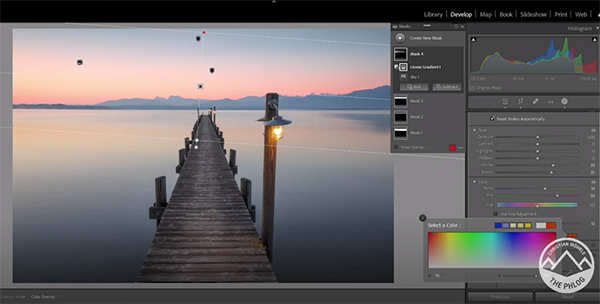Social media can be a time suck for interior designers. With thousands of interior design hashtags to choose from – how do interior designers pick which ones to use?
Not only can you get distracted by the amazing imagery shared at every minute of every day.
But knowing how to make the most out of your own posts is a common query I hear time after time. Instagram hashtags are vital for success on the social media platform.
Users can search for Instagram posts using hashtags. This means they can find new accounts by interior designers (like yours!) to follow. Using the right Instagram home decor hashtags for your
interior design business is a great way to attract new followers.
Top 50 Interior Design Hashtags [by Category]
I studied hashtag usage on Instagram and have found the top 50 Instagram home hashtags you should be using (if relevant) on your Instagram posts. Please be aware this is not a definitive list (yet!) – I’m building out the definitive list as you read this.
Generic Interior Design Hashtags
These are the best hashtags you can use on almost all of your posts, they are traditional hashtags for interiors that cover all types of design, colours, styles, and rooms – so feel free to add them to any of your posts.
| Hashtag |
Posts on Instagram |
| #Home |
107,598,000 |
| #InteriorDesign |
52,797,290 |
| #Deco |
38,410,000 |
| #Decor |
38,410,000 |
| #HomeDecor |
36,134,000 |
| #Decoration |
22,312,000 |
| #Interiors |
13,560,000 |
| #HomeStyle |
4,767,000 |
| #Interior123 |
4,083,000 |
| #Interior4All |
3,900,000 |
| #HomeInspo |
2,417,000 |
| #HomeInspiration |
1,542,000 |
| #ModernHome |
1,036,000 |
| #InteriorLovers |
1,000,000 |
| #HomeRenovation |
791,000 |
| #HouseGoals |
658,000 |
| #InteriorStylist |
481,000 |
| #HouseTour |
260,000 |
| #InteriorDesire |
219,000 |
| #HomeReno |
179,000 |
| #HouseEnvy |
58,000 |

InstaHeavy Interior Design Hashtags
These are the Instagram specific hashtags – used more commonly by the hardcore Instagrammers. These should definitely increase the engagement on your design related posts.

Niche Interior Design Hashtags
There are a wide range of Instagram hashtags in this section that cover a variety of styles and designs. Make sure you only use the relevant hashtags for your post, if the hashtag closely matches the images – this will increase your chances of higher engagement.
From cozy home hashtags to
Scandinavian style, do more research on your particular style and these could be a goldmine for you.
| Hashtag |
Posts on Instagram |
| #CountryLife |
6,090,000 |
| #WallDecor |
2,412,000 |
| #MidCenturyModern |
2,189,000 |
| #ChristmasDecorations |
2,076,000 |
| #ScandinavianDesign |
1,957,000 |
| #BeachHouse |
1,476,000 |
| #ChristmasDecor |
1,331,000 |
| #FindItStyleIt |
656,000 |
| #ScandinavianStyle |
646,000 |
| #CottageStyle |
564,000 |
| #ScandinavianHome |
256,000 |
| #SmallSpaceSquad |
102,000 |
| #TileStyle |
62,000 |

Colour Based Interior Design Hashtags
Whether you are an advocate of bright colours or a believer in white – there are a range of colour specific hashtags that you can use when you post. I have only selected a few here, but if you do some searches on Instagram, you’ll find that every colour has their own best hashtags and fans.

Room Specific Interior Design Hashtags
If you are posting a particular room shot – there’s a hashtag for that. In fact, there is likely a lot of hashtags for that. Particularly kitchen hashtags or a hashtag for bedroom interior – people love them on Instagram.

Branded Interior Design Hashtags
These are popular branded hashtags in the interior design industry that you can jump on to drive more followers for your account. Use these sparingly as you don’t want to spam these hashtags – better yet, try and create your own branded custom hashtag!

5 Top Tips for Using Hashtags on Instagram
Only Use Relevant Hashtags.
It can be tempting to try and add in popular hashtags in the hope they will make your post get more likes and engagement. However, research has proven that this can actually be counterproductive and lead to less engagement not only on that post but on your future posts as well.
This is presumed to be linked to Instagram’s algorithm which basically rewards good engagement.
Don’t Overdo It With Hashtags.
Always maxing out the 30 limit on hashtags, particularly within your post description, can lead to decreased engagement. It often looks spammy and unprofessional and can end up negatively affecting the visibility of your posts. Aim for a max of 10-15 carefully curated hashtags per post.
Add Hashtags in The Comments [not the description]
A neat little trick to get your posts displaying for hashtags but not interrupt the aesthetics of your post’s description is to put your hashtags in the first comment. This way you make the comments less intrusive to your followers.
Some people add a big gap in the description and hide hashtags that way – this means that on the app people have to scroll past this to comment once they read your description which leads to fewer comments, which affects the visibility of your future posts.
Create Your Own Branded Hashtag
By creating your own branded hashtag, you can increase your brand awareness and followers. However, it is often very difficult to get right and interior designers ideally need a lot of followers to start with to get it traction.
It’s a great idea to get your own clients and customers to share their images using the hashtag. Encourage the use of it on your site, potentially through a competition to give the hashtag more awareness and then it should keep going once it’s popular.
Remember to do research to make sure your brand hashtag of choice isn’t already being used.
Mix Up The Hashtags
Whilst using relevant hashtags but also being limited to 10-15 per post for maximum engagement – you need to mix up the popularity of the hashtags you use.
Using some smaller, less popular hashtags can lead to higher engagement as the people who follow or search for those hashtags are more likely to like or comment on your posts.
The more you research and experiment with hashtags, the more instinctively you’ll use them. And it’s really important that you do.
With the right interiors and lifestyle hashtags, interior designers can boost their Instagram following, brand profile, website traffic and get more clients.
Note: If there are any key interior design hashtags you think I’m missing, please do let us know and I will continue to update this post.







































